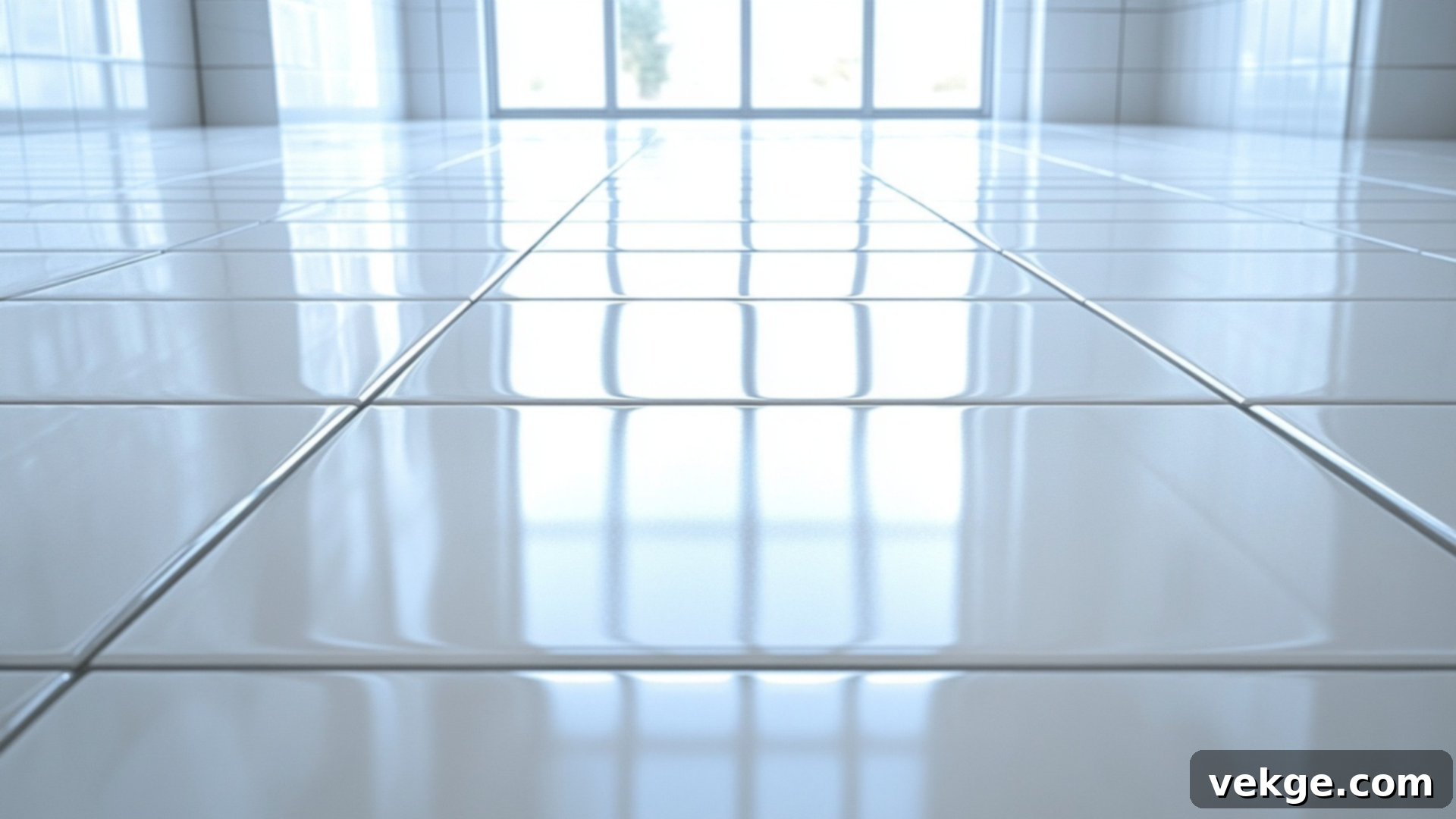Choosing the Perfect Grout Color for White Tiles: An Ultimate Guide to Design & Maintenance
Embarking on a renovation or simply updating a space with classic white tiles presents an exciting design opportunity, especially when it comes to selecting the right grout color. While often considered a minor detail, the choice of grout can dramatically transform the overall look and feel of your room, dictating everything from its perceived size to its style and even the level of maintenance required. Whether you’re aiming for a subtle, seamless aesthetic or a bold, contrasting statement, understanding the impact of different grout shades is crucial.
This comprehensive guide will help you navigate the myriad of options available for pairing with white tiles. We’ll delve into the visual effects of light versus dark shades, explore how each choice influences the ambiance of your space, and provide practical considerations to ensure your decision aligns with both your design vision and lifestyle. By the end of this article, you’ll be equipped with the knowledge to select a grout color that not only complements your white tiles but also enhances your home’s beauty and functionality for years to come.
How Grout Color Affects White Tiles: Beyond the Surface
The interplay between white tiles and grout color is more profound than many realize. Grout isn’t merely a filler; it acts as a design element that can either highlight individual tiles or create a unified surface. The color you select directly impacts the visual rhythm and character of your tiled area, influencing aspects like spaciousness, definition, and overall aesthetic harmony.
Lighter grout shades, such as soft gray, cream, or off-white, tend to blend effortlessly with white tiles. This creates a clean, continuous surface that visually expands small spaces, making rooms feel larger, brighter, and more open. This seamless effect is highly sought after in minimalist, Scandinavian, or contemporary designs where understated elegance is key. It allows the texture or subtle variations in the white tiles themselves to take center stage, rather than the grout lines.
Conversely, darker grout colors like charcoal, black, or even navy introduce a striking contrast. This contrast acts as an outline for each individual white tile, making them “pop” and emphasizing their shape and pattern. The result is a more defined, graphic, and often modern or industrial look. This approach can be particularly effective with classic subway tiles, highlighting their iconic rectangular form. Darker grout also grounds the space, adding depth and a sense of sophistication. For those looking to inject personality, even fun, unexpected hues like sage green or deep blue can be chosen to tie into existing décor accents or create a vibrant focal point, turning a simple white tile installation into a work of art.
Beyond aesthetics, practical considerations are also tied to grout color. Lighter grout tends to show dirt, dust, and stains more readily, demanding more frequent cleaning to maintain its pristine appearance. Darker grout, on the other hand, is much more forgiving, effectively camouflaging everyday grime and reducing the perceived need for constant upkeep. Balancing style with practicality is essential, ensuring your chosen white tile grout color contributes positively to both the visual appeal and long-term maintenance of your space.
Key Factors to Consider When Choosing Grout Color for White Tiles
Selecting the ideal grout color for your white tiles involves more than just personal preference; it’s a strategic decision that affects the overall ambiance, longevity, and maintenance of your space. Here are the primary factors to meticulously consider:
- Tile Type and Pattern: The style and arrangement of your white tiles heavily influence the best grout choice. For simple, uniform tiles like classic subway tiles or large format squares, a contrasting grout can beautifully highlight their geometry and create visual interest. With intricate mosaic tiles or unique patterns, a similar-colored grout might be preferable to allow the tile design itself to be the star, preventing the grout lines from becoming too distracting.
- Room Functionality and Traffic: The purpose of the room is a critical determinant. In high-traffic areas such as kitchen backsplashes, bathroom floors, or shower enclosures, where dirt, moisture, and spills are common, darker grout colors are highly recommended. They are much more effective at hiding stains, dirt, and mildew, thereby reducing the frequency of deep cleaning. In contrast, lighter grout might be suitable for low-traffic areas like a guest bathroom wall or decorative feature where dirt accumulation is less of a concern.
- Desired Style Preference: Grout color is a powerful tool for setting the design tone. Dark gray or black grout injects a bold, modern, and industrial edge, perfect for contemporary spaces. Warm tones like beige, tan, or even light brown can evoke a softer, more relaxed, or traditional feel, complementing farmhouse or Mediterranean aesthetics. White or very light gray grout offers a clean, minimalist, and timeless look, ideal for bright, airy designs.
- Practical Considerations and Maintenance: This factor addresses the real-world implications of your choice. Lighter grout colors, particularly pure white, are notorious for showing dirt, grime, and mildew, requiring diligent and frequent cleaning to maintain their appearance. Darker grout, while offering a dramatic look, is significantly lower maintenance in terms of visible staining and daily upkeep. Consider your willingness and capacity for regular cleaning when making this decision.
- Room Lighting: Both natural and artificial light sources play a significant role in how grout colors are perceived. A grout color might appear lighter or darker depending on the amount of light in the room. Test samples under actual room lighting conditions to avoid surprises. Bright, abundant light can soften darker grout, while dim lighting can intensify it.
- Room Size: Grout color can visually alter the perception of space. Lighter, more seamless grout lines tend to make a small room feel larger and more open by creating an uninterrupted flow. Darker, contrasting grout, while stylish, can visually break up a space, potentially making a small room feel more enclosed or busy.
By thoughtfully considering these points, you can choose a grout color that not only matches your style but also aligns perfectly with the practical demands and existing characteristics of your space, enhancing both its aesthetics and ease of maintenance.
What Color Grout to Use with White Tile? Exploring Popular Options
When pairing grout with white tiles, the options are diverse, each offering a distinct mood and aesthetic. Let’s explore the most popular choices and their unique characteristics.
1. White Grout: The Seamless & Classic Choice
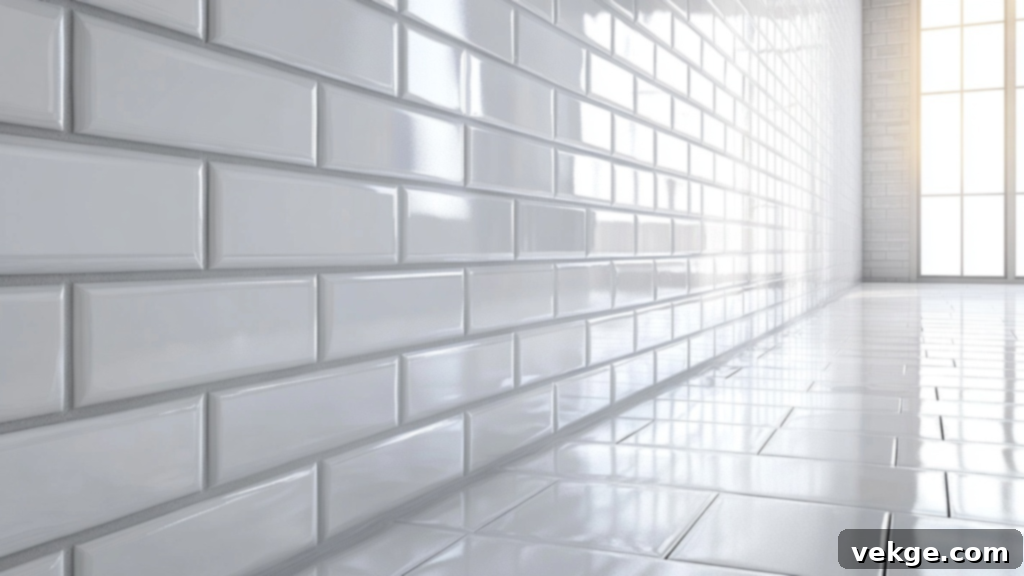
White grout creates a truly seamless and unified look when paired with white tiles, making the entire tiled surface appear as one expansive, clean entity. It’s the quintessential choice for achieving a minimalist, pristine, or all-white design, often found in Scandinavian or classic bathroom styles. This option visually expands spaces, making rooms feel larger and brighter. However, its primary drawback is its susceptibility to staining and discoloration. White grout, especially in high-traffic or wet areas like shower floors or kitchen backsplashes, will show dirt, grime, and mildew very easily, requiring consistent and thorough cleaning to maintain its immaculate appearance. Over time, it can also yellow or dull if not properly sealed and maintained.
2. Light Gray Grout: The Versatile & Subtle Enhancer
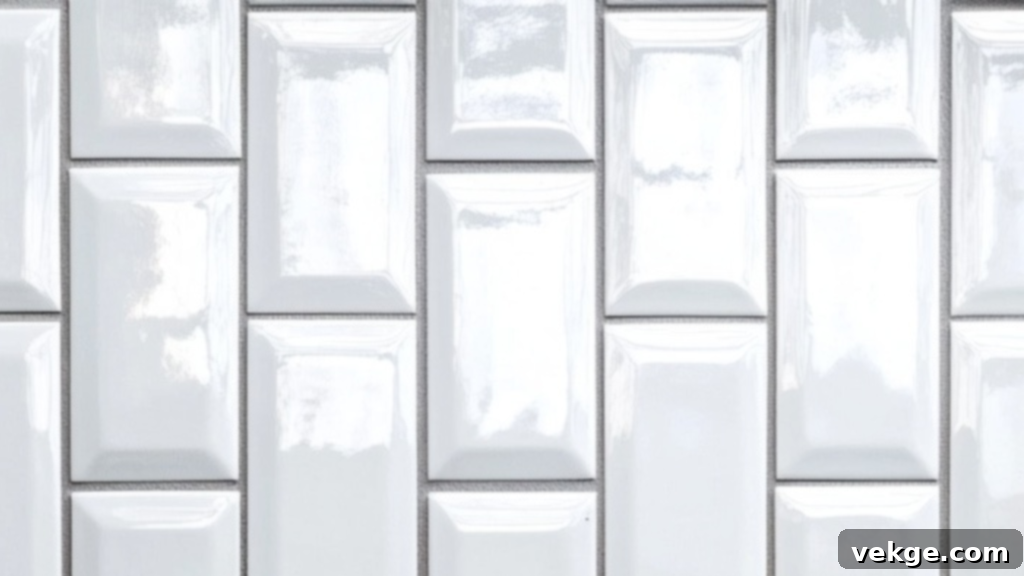
Light gray grout strikes an excellent balance, offering a subtle yet noticeable contrast to white tiles without being overly dramatic. It adds a gentle depth and definition to each tile, preventing the surface from looking completely flat while still maintaining a bright and airy feel. This option is perfect for creating a calm, relaxed, and modern atmosphere. A significant advantage of light gray is its practicality; it’s far more forgiving than white grout when it comes to concealing everyday dirt, dust, and minor stains, making it a low-maintenance choice for busy areas. It beautifully complements a wide range of interior styles, from contemporary to transitional, allowing the white tiles to shine with a touch more warmth and dimension than a purely white scheme.
3. Dark Gray/Charcoal Grout: The Bold & Sophisticated Statement
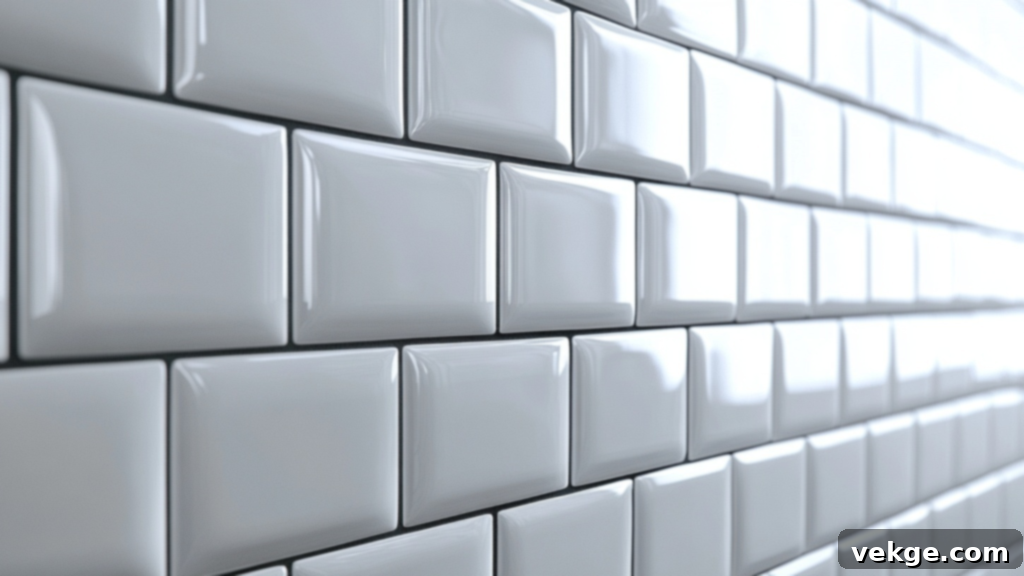
Dark gray or charcoal grout offers a powerful and striking contrast to white tiles, instantly infusing a modern, chic, and sophisticated touch into any space. This grout color excels at emphasizing the grid and pattern of the tiles, creating strong visual lines and adding significant definition. It’s an incredibly popular choice for those aiming for a contemporary, industrial, or even urban-farmhouse aesthetic. From a practical standpoint, dark gray is highly effective at camouflaging dirt, grime, and mildew, making it an excellent, low-maintenance option for bathrooms, kitchens, and high-traffic flooring. However, in very small spaces, this bold contrast can potentially make the room feel darker or more enclosed. Careful consideration of room size and lighting is advised.
4. Black Grout: The Dramatic & Edgy Statement

Black grout provides the ultimate level of contrast, creating an incredibly dramatic, bold, and often edgy look against white tiles. It’s a statement-maker that imbues spaces with a chic, contemporary, or even industrial-glam feel, causing the white tiles to truly pop with graphic intensity. Black grout is unparalleled in its ability to hide dirt, grime, and discoloration, making it one of the easiest options to maintain, especially in heavy-use areas. While undeniably striking, black grout can be quite dominant. It’s crucial to consider the overall size and layout of the room, as too much black grout in a small space could make it feel confined or heavy. It works best where you want to emphasize architectural lines or create a powerful visual impact, like a feature wall or a spacious bathroom floor.
5. Beige/Tan Grout: The Warm & Inviting Accent
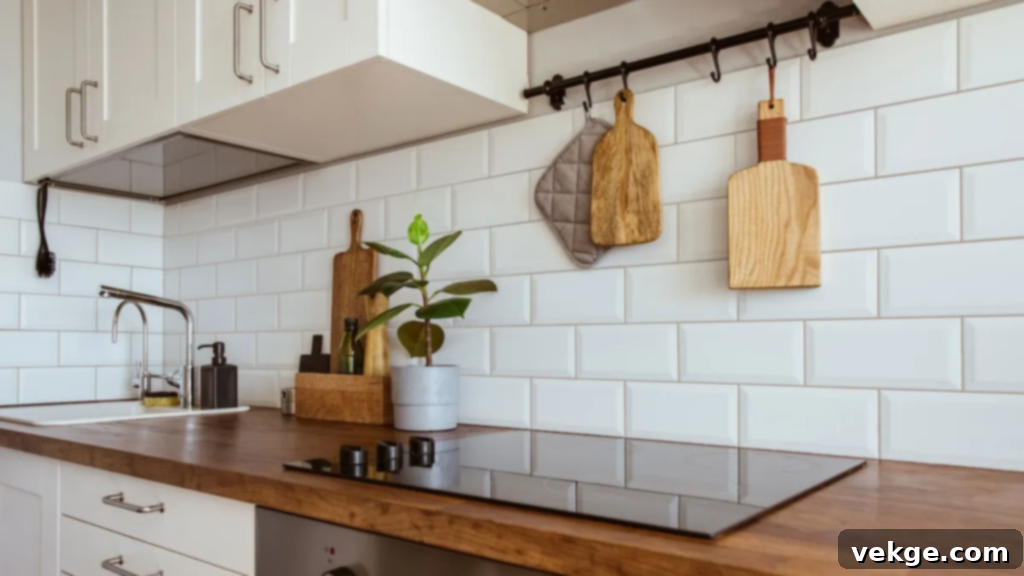
Beige or tan grout introduces a soft, warm, and natural contrast to white tiles, creating an instantly cozy and inviting atmosphere. This is an excellent choice for those seeking a more organic, earthy, or Mediterranean-inspired look, moving away from stark white or cool gray tones. It adds a subtle richness that can make a space feel more grounded and comfortable. Similar to light gray, beige grout is more practical than white for hiding dirt and stains, making it a good choice for family kitchens, bathrooms, or entryways where a softer aesthetic is desired. While it excels at providing warmth, it may not offer enough contrast for those aiming for a sharp, modern, or highly defined tile pattern.
6. Colored Grout: The Expressive & Unique Touch
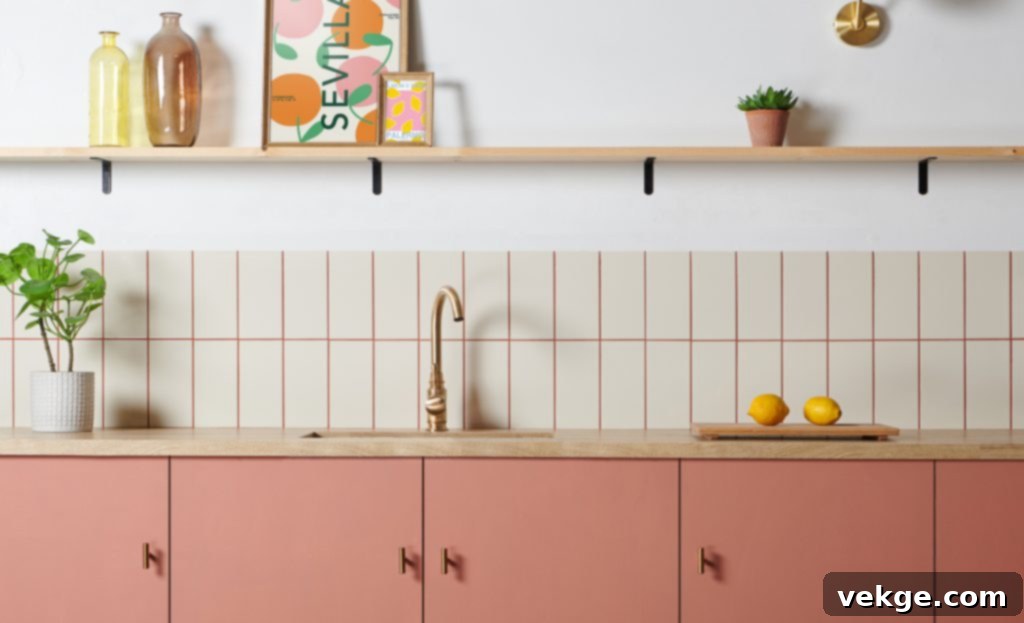
For the adventurous homeowner looking to make a distinctive statement, colored grout offers an exciting avenue for creative expression. Bold hues such as vibrant blues, emerald greens, earthy terra-cotta, or even metallic shades can inject personality and a truly unique touch into a space. Colored grout is particularly effective in areas where you want to create a focal point, such as a kitchen backsplash, a shower niche, or an accent wall in a bathroom. It can be used to pull colors from other elements in the room, creating a cohesive yet vibrant design. However, choosing colored grout is a significant commitment; it requires careful consideration to ensure it complements your existing décor and stands the test of time, as trends can shift. It may also demand more effort to maintain its vibrancy and can be more challenging to change if you decide to update your style in the future. Always test a sample first.
7. Eco-Friendly Grout: The Sustainable Choice
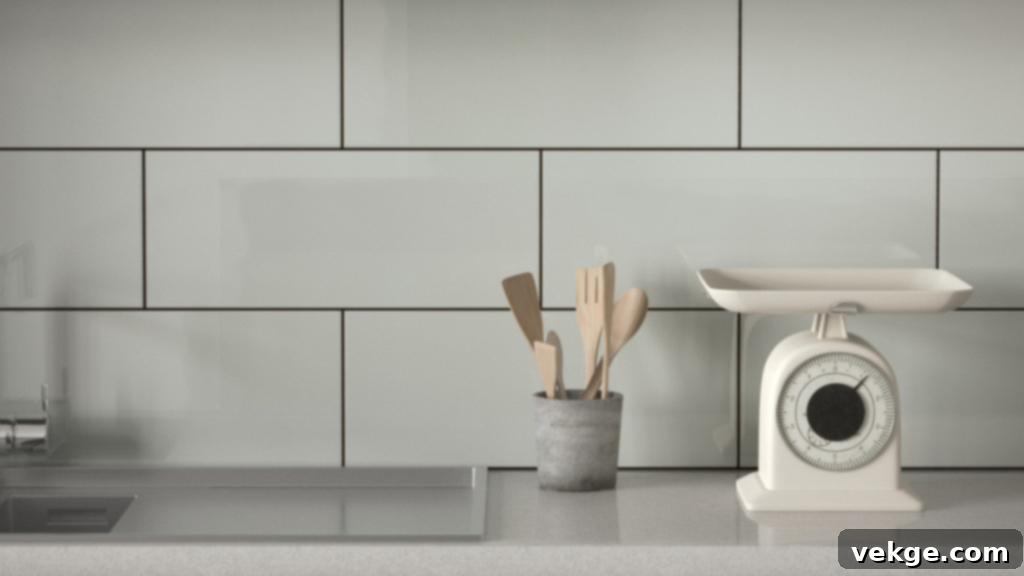
For environmentally conscious homeowners, opting for eco-friendly grout is a smart and responsible choice. These innovative grout options are formulated with sustainability in mind, often incorporating recycled materials like glass, or utilizing low-VOC (Volatile Organic Compound) formulas that reduce harmful emissions. This makes them a healthier option for both your home’s indoor air quality and the planet. Eco-friendly grouts are available in a broad spectrum of colors, including popular shades that pair well with white tiles, and are designed to be just as durable, water-resistant, and easy to clean as their traditional counterparts. Choosing sustainable grout not only contributes to a greener renovation project but also allows you to achieve a beautiful, high-performing finish without compromising your values.
When to Consider a Professional for Grout Installation
While many DIY enthusiasts can successfully tackle grout installation, there are specific scenarios where enlisting professional help is highly advisable to ensure a flawless and lasting finish. Intricate tile patterns, such as complex mosaics, herringbone, or chevron layouts, demand a high level of precision and expertise to ensure grout lines are uniform and aesthetically pleasing. Professionals possess the specialized tools and experience to achieve immaculate results, especially crucial for white tiles where any imperfection in grout application can be glaring.
Furthermore, if you’re working with delicate or expensive tile materials (like natural stone, handmade tiles, or glass mosaics) that require specific grouting techniques and protection, a professional can prevent costly mistakes. Large areas, particularly floors or entire bathrooms, can be physically demanding and time-consuming; a professional will ensure efficient and consistent application, guaranteeing durability and proper sealing. Finally, if you’re seeking expert advice on grout color selection to perfectly harmonize with your overall design scheme, or require guidance on advanced sealing and maintenance for optimal longevity, consulting with a professional can provide invaluable insights and save you significant time, effort, and potential future problems.
Which Grout Color Should You Choose for Your White Tiled Home?
Making the final decision on grout color for your white tiles can feel overwhelming, but by revisiting the key considerations, you can confidently select the perfect match. Remember, the right grout color profoundly impacts the overall look and feel of your space, so a thoughtful approach is paramount.
For a pristine, clean, and expansive look, white or very light gray grout offers a seamless appearance that allows your white tiles to blend harmoniously, making smaller rooms feel larger and brighter. This choice is ideal for minimalist or classic aesthetics where an understated elegance is preferred, though it does require dedicated maintenance.
If your aim is a bold, modern, or graphic statement, darker grout colors like charcoal or black will provide a striking contrast. These shades dramatically highlight your tile patterns, adding definition and a sophisticated edge. They are also incredibly practical for high-traffic areas due to their excellent stain-hiding capabilities, perfect for contemporary kitchens or bathrooms.
For a softer, more natural, and inviting vibe, beige or tan grout can introduce warmth and a gentle contrast. This option is fantastic for creating a cozy atmosphere in farmhouse or rustic-inspired spaces and offers better stain resistance than pure white grout.
Ultimately, your ideal grout color should be a reflection of your personal style, the practical needs of the room, and your commitment to maintenance. Consider the tile type, the room’s function, its lighting, and your desired aesthetic. Don’t hesitate to test samples in your space under various lighting conditions before making a final commitment. Taking the time to choose wisely will ensure your grout not only enhances the beauty of your white tiles but also contributes positively to the long-term enjoyment and functionality of your home.
Grout Maintenance for White Tiles: Keeping Them Pristine
Proper maintenance of grout, especially when paired with white tiles, is crucial to preserving its appearance and prolonging its lifespan. Neglected grout can quickly detract from even the most beautiful white tile installation. Here are essential tips for keeping your grout lines looking fresh and clean for years to come:
- Regular Cleaning is Key: Make it a habit to clean grout lines regularly with a mild, pH-neutral cleaner. This proactive approach prevents the buildup of dirt, soap scum, and grime that can lead to stubborn discoloration. For routine cleaning, a soft cloth or sponge is usually sufficient.
- Apply a High-Quality Sealant: Grout is porous, making it susceptible to absorbing stains and moisture. Applying a penetrating grout sealant after installation, and reapplying it periodically (typically every 1-2 years, depending on traffic and product), creates a protective barrier. This is especially vital in wet areas like showers and kitchen backsplashes to prevent mold, mildew, and deep-seated stains.
- Avoid Harsh Chemicals: Steer clear of abrasive cleaners, steel wool, or harsh chemicals like undiluted bleach or acid-based products. These can erode the grout, strip its sealant, and cause permanent discoloration or damage to both the grout and surrounding tiles over time. Always opt for gentle, non-abrasive cleaning solutions.
- Dry Excess Moisture Promptly: After showering, bathing, or cleaning, ensure that grout lines are thoroughly dried. Lingering moisture is the primary culprit behind mold and mildew growth, which can quickly turn white grout unsightly. Good ventilation in bathrooms also plays a crucial role.
- Address Cracks and Deterioration: Inspect your grout lines periodically for any cracks, crumbling, or deterioration. Damaged grout not only looks bad but can also allow water to seep beneath the tiles, potentially causing structural damage. Reapply grout in affected areas promptly to maintain a uniform look and ensure the integrity of your tiling.
- Gentle Routine Scrubbing: For more stubborn stains or areas with heavier buildup, use a soft-bristled brush (like an old toothbrush or a specialized grout brush) with your mild cleaner. Scrub gently along the grout lines to lift dirt without damaging the surface. Avoid excessively aggressive scrubbing, which can abrade the grout.
- Test Cleaning Products: Before applying any new cleaning solution or sealant to your entire tiled area, always test it on an inconspicuous spot first. This helps ensure that the product won’t discolor or damage your specific type of grout or tile.
By diligently following these maintenance steps, you can significantly extend the life and beauty of your white tile grout, keeping your space looking fresh, clean, and inviting for many years.
Conclusion: The Lasting Impact of Your Grout Color Choice
The journey of choosing the perfect grout color for your white tiles is a testament to how even the smallest design decisions can have a profound and lasting impact on your living space. From the bright, expansive feel created by seamless white grout to the bold, defined statement of a dark charcoal, the shade you select plays a pivotal role in dictating the overall aesthetic, mood, and practicality of your room.
This guide has hopefully illuminated the diverse options available, offering insights into their visual effects, design compatibility, and maintenance considerations. Remember that your ultimate choice should be a harmonious blend of personal style, the functional demands of the room, and your commitment to ongoing care. Whether you prioritize a striking visual contrast, a subtle blend, or the ease of maintenance, there’s a perfect grout color waiting to elevate your white tiles.
Embrace the opportunity to create a space that not only looks beautiful but also functions effortlessly for your lifestyle. A well-chosen and diligently maintained grout ensures that your white tile installation remains a timeless and cherished feature of your home for years to come.
